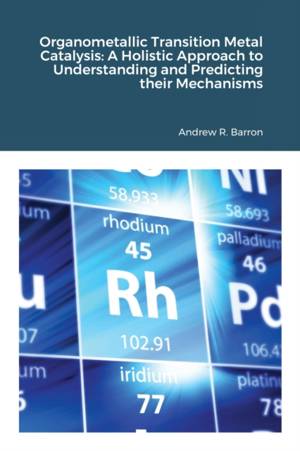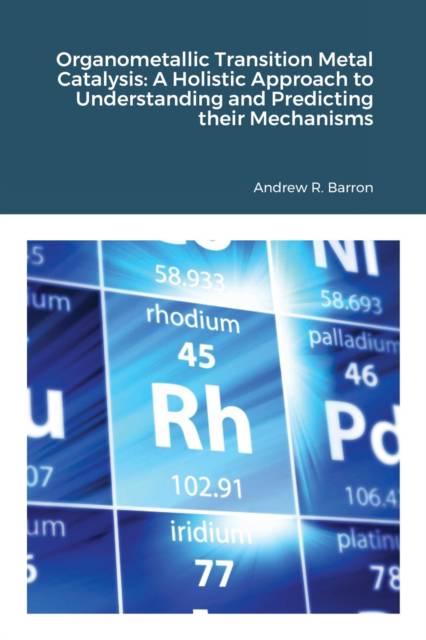
- Afhalen na 1 uur in een winkel met voorraad
- Gratis thuislevering in België vanaf € 30
- Ruim aanbod met 7 miljoen producten
- Afhalen na 1 uur in een winkel met voorraad
- Gratis thuislevering in België vanaf € 30
- Ruim aanbod met 7 miljoen producten
Zoeken
Organometallic Transition Metal Catalysis
A Holis-tic Approach to Understanding and Predicting their Mechanisms
Andrew Barron
Paperback | Engels
€ 56,95
+ 113 punten
Omschrijving
Leonardo da Vinci's quote that "simplicity is the ultimate sophistication" is possibly the most appropriate description of organometallic catalysis. Whereas organic chemistry is exemplified by hundreds of different reactions (many egotistically named after those who discovered them) transition metal inorganic and organometallic compounds only undergo eight metal centered reactions, of which, four are the reverse (equilibrium) reactions of four others, thus limiting further the possible reactions, that need to be considered in transition metal inorganic and organometallic chemistry, to just four: ligand association/ligand dissociation, ligand insertion/ligand elimination, oxidative addition/reductive elimination, and electron transfer (redox). This makes understanding and prediction of catalytic cycles simple, since any overall reaction must be a combination of these reactions. For added simplicity, electron transfer is a reaction more associated with metal containing biological catalyst pathways rather than organometallic catalysis. Given the limited potential reactions available to organometallic transition metal compounds it should be possible to develop a simple approach to the prediction and rationalization of any catalytic reaction in which they act as the catalysts or catalyst precursor (pro-catalyst).
Specificaties
Betrokkenen
- Auteur(s):
- Uitgeverij:
Inhoud
- Aantal bladzijden:
- 114
- Taal:
- Engels
Eigenschappen
- Productcode (EAN):
- 9781678003531
- Verschijningsdatum:
- 19/02/2022
- Uitvoering:
- Paperback
- Formaat:
- Trade paperback (VS)
- Afmetingen:
- 152 mm x 229 mm
- Gewicht:
- 222 g

Alleen bij Standaard Boekhandel
+ 113 punten op je klantenkaart van Standaard Boekhandel
Beoordelingen
We publiceren alleen reviews die voldoen aan de voorwaarden voor reviews. Bekijk onze voorwaarden voor reviews.











